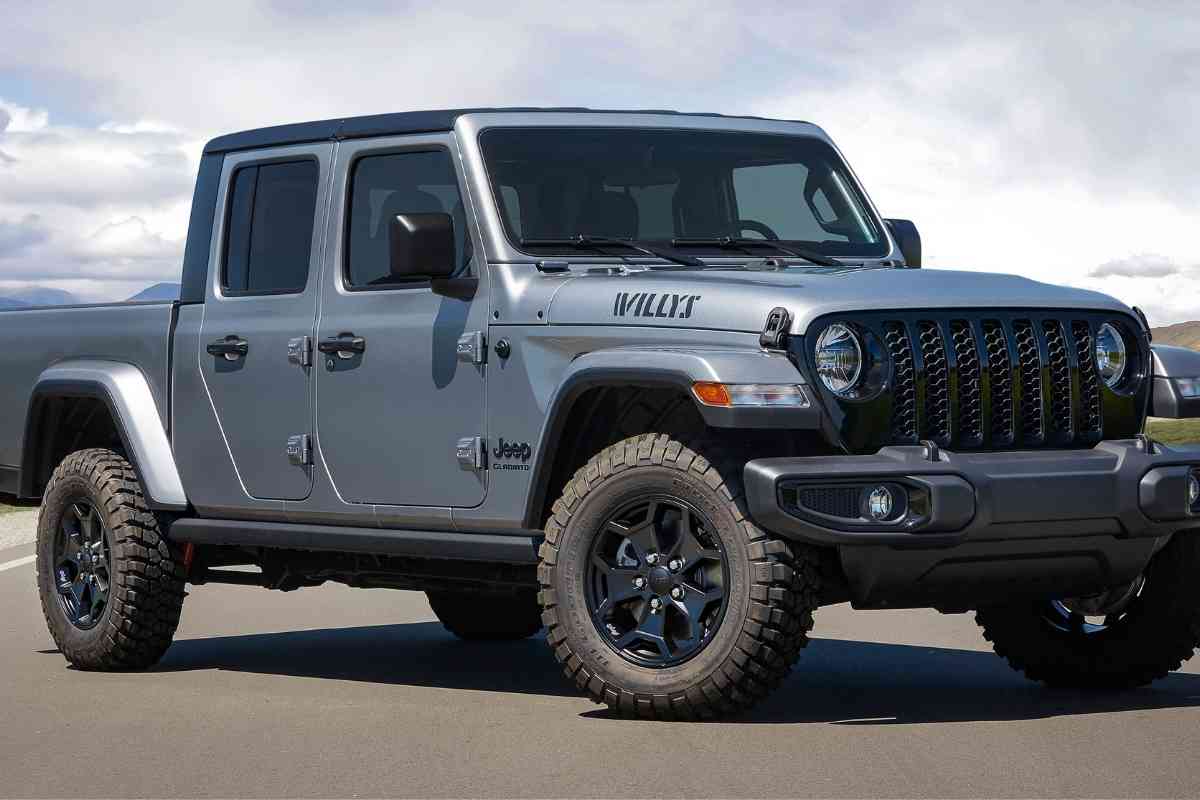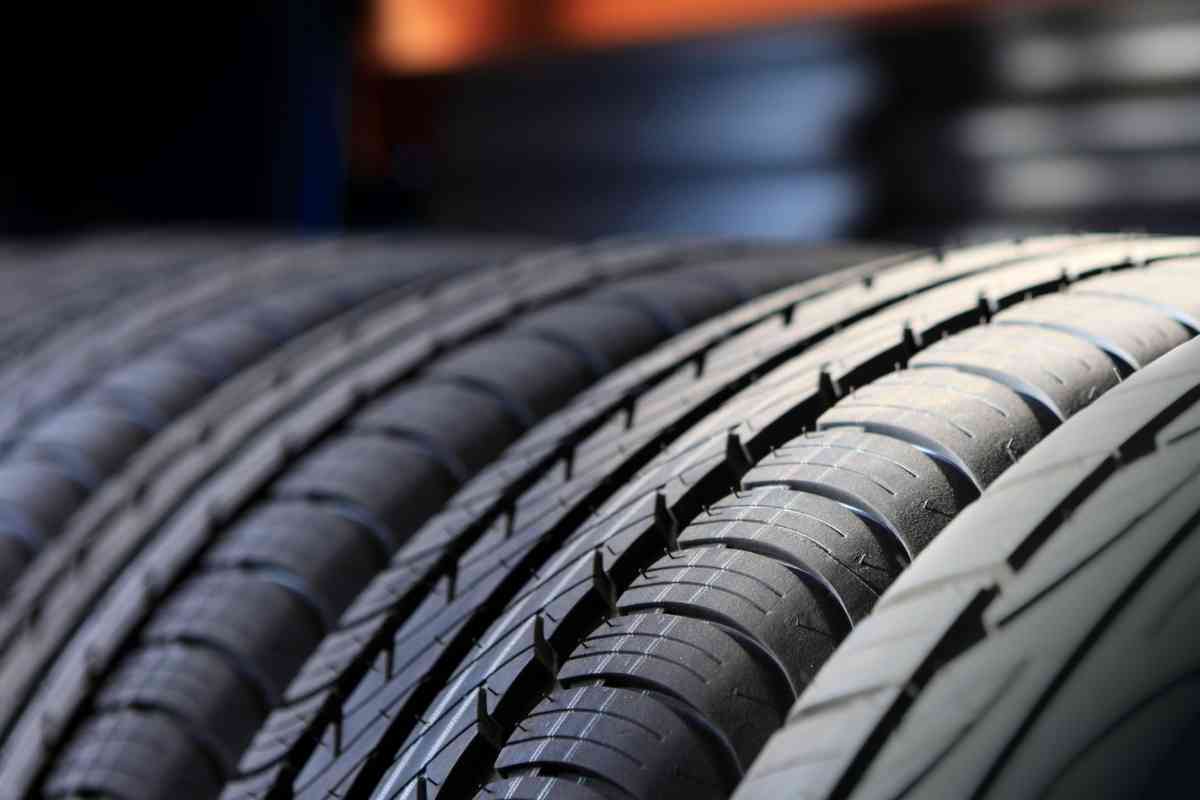Can You Put 35 Inch Tires On A Stock Jeep Gladiator?
The newest models of the Jeep Gladiator are highly sought after by off-road enthusiasts from all over the US. But can you put 35-inch tires on a stock Jeep Gladiator? Many Jeep owners in the past have noted that in order to get full use out of their Jeep and their 35-inch tires, they needed to install some sort of lift kit to ensure that the tires do not rub against the inside of the fenders. As this had been the case in certain Jeep models, especially older models, the engineers and designers over at Jeep started to pay attention.

Can You Put 35 Inch Tires On A Stock Jeep Gladiator?
You can put 35-inch tires on a stock Jeep Gladiator. However, if you are planning on driving your Jeep off-road or on unpaved trails, then it may be necessary to install at a minimum a 2-inch coil spacer kit or a complete 2-inch lift kit.
If a Jeep owner wanted to install a lift on their Jeep Gladiator Rubicon, there are two different approaches they can take. First, they could keep the stock coils and shocks and simply add a coil spacer kit.
Second, they could install a lift kit that comes with all new coils and shocks. If the owner opts to keep the factory coils and shocks and simply use a coil spacer kit, they may experience a smoother ride in your Gladiator when they are driving on paved roads and highways.
f the owner does a complete overhaul with all new coils and shocks, the ride may seem stiffer on conventional roads, however, the driver then can feel free to really let loose and drive aggressively when they hit the off-road trails.
If you are planning on taking your Jeep off-road frequently, then it is strongly recommended that you install a lift of some sort. Let us take a look at how to install both a coil spacer kit using the existing coils and shocks as well as how to install a lift kit with an all-new suspension including new coils and shocks.
Putting new 35-inch tires on a Jeep Gladiator Rubicon and installing a lift kit is a common thing that many Jeep owners do.
Who then is better to explain how to install a lift kit on a Jeep Gladiator than real Jeep owners who have experience doing the project themselves and who have taken the time to explain the process step-by-step. We have found different Jeep owners who some have chosen to simply install the spacer kits and some have opted for kits with all new coils and shocks.
Let us take a look at how these Jeep owners managed to perform these two procedures on their own.
How to install a coil spacer lift kit in a Jeep Gladiator

Before you install any sort of lift on your Jeep Gladiator Rubicon, it is important to note that the factory jack will no longer be sufficient if you should happen to need to lift your vehicle to put on a spare tire or to place something beneath a tire for increased traction when off-roading in mud or on rough terrain. You will need to purchase a hi-lift jack, know how to properly use it, and keep one in your Jeep at all times.
For the optimal off-roading experience, it is recommended that you install a minimum of a 2-inch lift on your Jeep Gladiator Rubicon. You can find a 2-inch coil spacer kit to attach to your factory coils and shocks online or at your local auto parts dealer.
To install a coil spacer kit on your Jeep Gladiator Rubicon, you will need a hi-lift floor jack, jack stands, and access to common hand tools that you should have in your garage. Here is a step-by-step guide on how to install the coil spacer kit on your 2019 or newer Jeep Gladiator.
- Jack up the rear of the Jeep with the hi-lift floor jack and use the jack stands to hold the Jeep in place.
- Take off the rear tires.
- Loosen the Track Bar hardware as well as all of the control arm bolts.
- Remove the ABS sensor from the axle.
- Remove the bottom bolts from the shocks. (Be sure to save the hardware)
- Remove sway bay end connectors. (Be sure to save the hardware)
- Lower the axle until you can remove the springs. Remove the factory isolator from the top of each spring.
- Reinstall the spring with the new coil spacer.
- Drill the factory holes in the bump stop pads.
- Install the bump stop spacers.
- Install the shock extension brackets.
- Install the end connectors and put the wheels back onto the vehicle.
- Remove the driveshaft pillow block from the frame and install the provided spacers to prevent vibration.
Now that the rear suspension has been properly outfitted with the coil spacer kit, it is time to move on to the front suspension.
- Jack up the front end of the Jeep with the hi-lift floor jack and support the frame using the jack stands.
- Take off the front tires.
- Loosen the track bar boots and all of the control arm bolts.
- Remove the sway bar end connectors. (Be sure to save the hardware)
- Remove lower shock mount hardware. (Be sure to save the hardware)
- Unbolt the brake line brackets from the frame.
- Unhook the connector and harness running to the central axle disconnect.
- Lower the front axle and remove the front springs and isolators.
- Install the front coil spring spacers.
- Place bump stop spacer inside spring.
- Install shock extension brackets and then re-install the shock mount hardware.
- Install end connectors.
- Re-install brake line brackets, and axle wiring, and put the wheels back on.
- Lower the Jeep to the ground and tighten all hardware to ensure everything is properly secured.
- Take your Jeep to a Jeep technician or a local mechanic to have an alignment done.
As you can see, if you have the proper tools, hi-lift floor jack, and jack stands, installing a 2-inch coil spacer kit can be done on your own. If you have access to a hoist, even better. All in all, the entire process should take about four hours to complete. If you are uncomfortable with any part of the process or you are not mechanically inclined, you may want to have your coil spacer kit professionally installed by a certified mechanic.
How to install a lift with new coils and shocks on a Jeep Gladiator
If you purchase a lift kit that also comes with new coils and shocks, you may find that the installation procedure is quite similar to installing a coil spacer kit but just with a few extra steps. Here is a step-by-step guide on how to install a lift kit with new coils and shocks on a Jeep Gladiator.
Before you start, make sure you have the following equipment. Hi-lift floor jack, jack stands, torque wrench, pliers, metric & SEA socket wrench set, and a metric & SAE hex key socket wrench set.
- Set the emergency brake and block the rear tires with a wood block or brick.
- Raise the front of the vehicle and support the frame of the Jeep using jack stands.
- Remove the front tires.
- Remove the front skid plate.
- Remove the front sway bar end links.
- Disconnect the front track bar from the frame.
- Disconnect the drag link from the pitman arm.
- Remove the front shocks.
- Disconnect the front brake line brackets from the front lower control arms.
- Disconnect the front driveshaft flange at the front differential.
- Disconnect the wing harness from the 4WD actuator.
- Disconnect the vent hose from the front differential using the pliers.
- Lower the front differential and remove the front coil springs.
- Install the new front coil springs and front bump stop spacers to the front bump stop pads.
- Raise the differential and loans the new front coil springs and connect the front driveshaft.
- Connect the drag link to the pitman arm.
- Connect the vent hose to the front differential.
- Connect the wiring harness to the 4WD actuator.
- Connect the wiring harness to the passenger side front upper control arm.
- Connect the front brake line to the front lower control arms.
- Install the new front shocks.
- Install the new front sway bar end links using the supplied steel sleeves.
- Install the front skid plate.
- Re-install the front tires and lower the Jeep to the ground.
- Connect the front track bar to the frame.
For the rear vehicle, the steps of installation are pretty much the same just with fewer steps since there are fewer components on the rear axle of a Jeep Gladiator Rubicon.
For a complete guide on how to install a 2.5-inch front end with a 1-inch rear-end lift kit, check out this instruction manual provided by Skyjacker Suspensions. Any lift kit that you purchases should come with a detailed instruction manual, however, the process is going to be quite a similar no matter which brand and which kit you choose.
